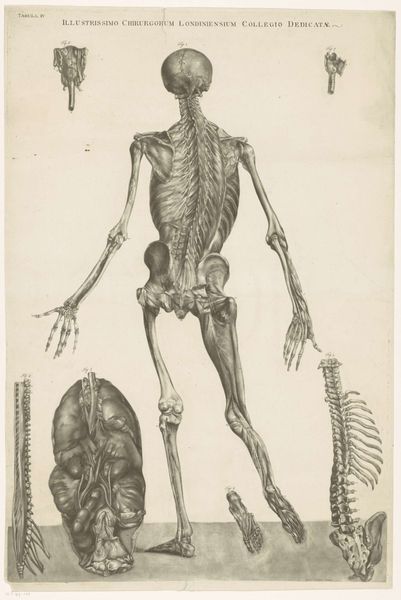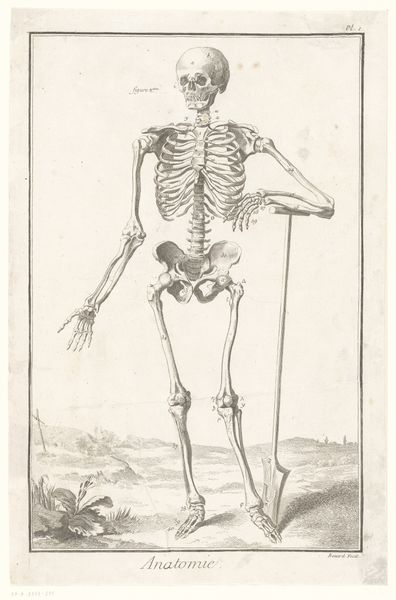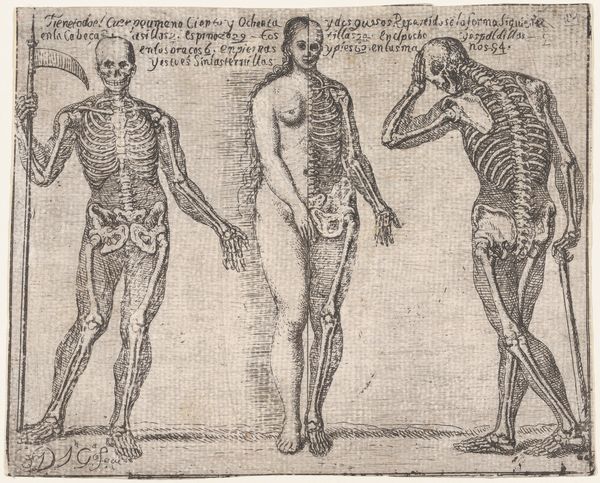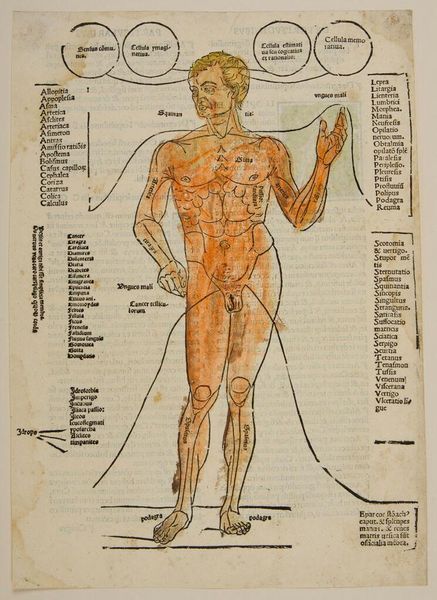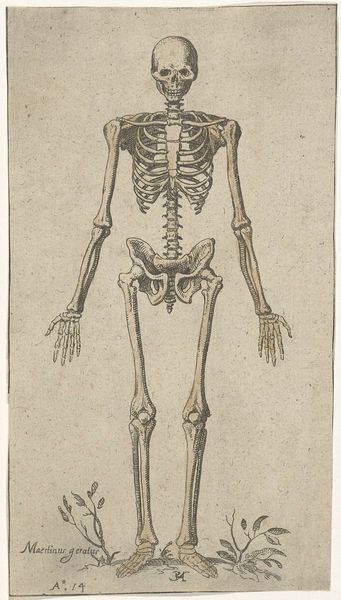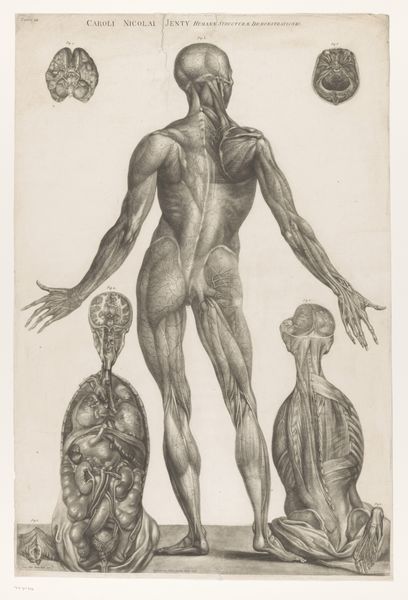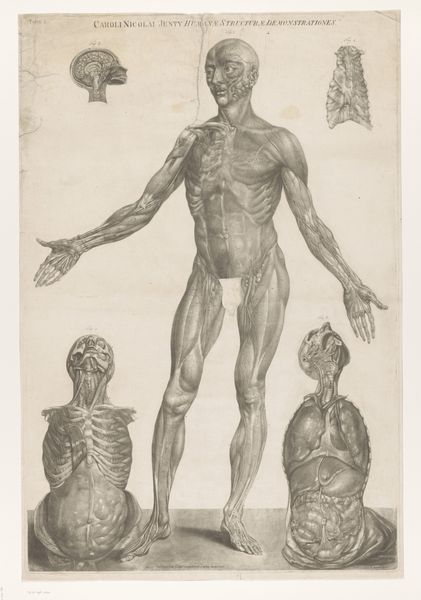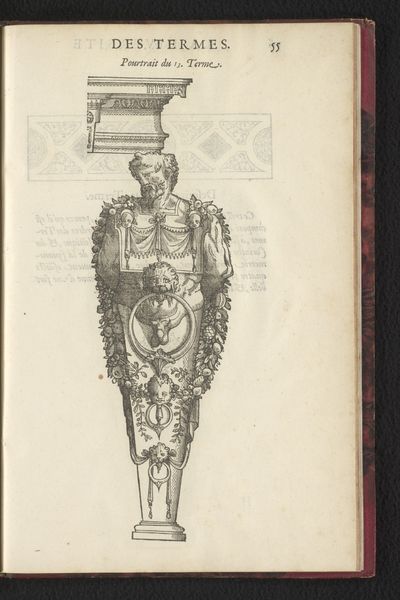
Ortus Sanitatis/ De herbis et plantis/ De Animalibus & reptilibus ... 1490 - 1497
0:00
0:00
drawing, print, woodcut
#
portrait
#
drawing
#
medieval
# print
#
book
#
figuration
#
woodcut
#
history-painting
#
academic-art
Dimensions: Overall: 11 13/16 x 8 1/4 x 2 3/4in. (30 x 21 x 7cm)
Copyright: Public Domain
This woodcut, from Johann Prüss the Elder around 1500, depicts a skeleton meticulously labeled, a stark reminder of mortality. The skeletal figure, a symbol of death, serves as a *memento mori*, urging viewers to reflect on the transience of life. Consider the enduring presence of the skeleton throughout art history. In ancient Roman mosaics found in Pompeii, skeletons appear at feasts, while in medieval danse macabre imagery, death dances with all social classes. This motif transcends time, evolving from a symbol of decay to a powerful emblem of existential awareness. The gesture of the skeleton, open and forthright, mirrors the 'pathetic formula' of ancient orators, appealing directly to our emotions. Just as the ancients used rhetoric to stir the soul, the image of death touches our deepest fears and anxieties. This is not merely a medical illustration, but a profound meditation on the human condition. The cyclical nature of this symbol persists, reminding us that from the ashes of the past, new interpretations and understandings constantly emerge.
Comments
No comments
Be the first to comment and join the conversation on the ultimate creative platform.
